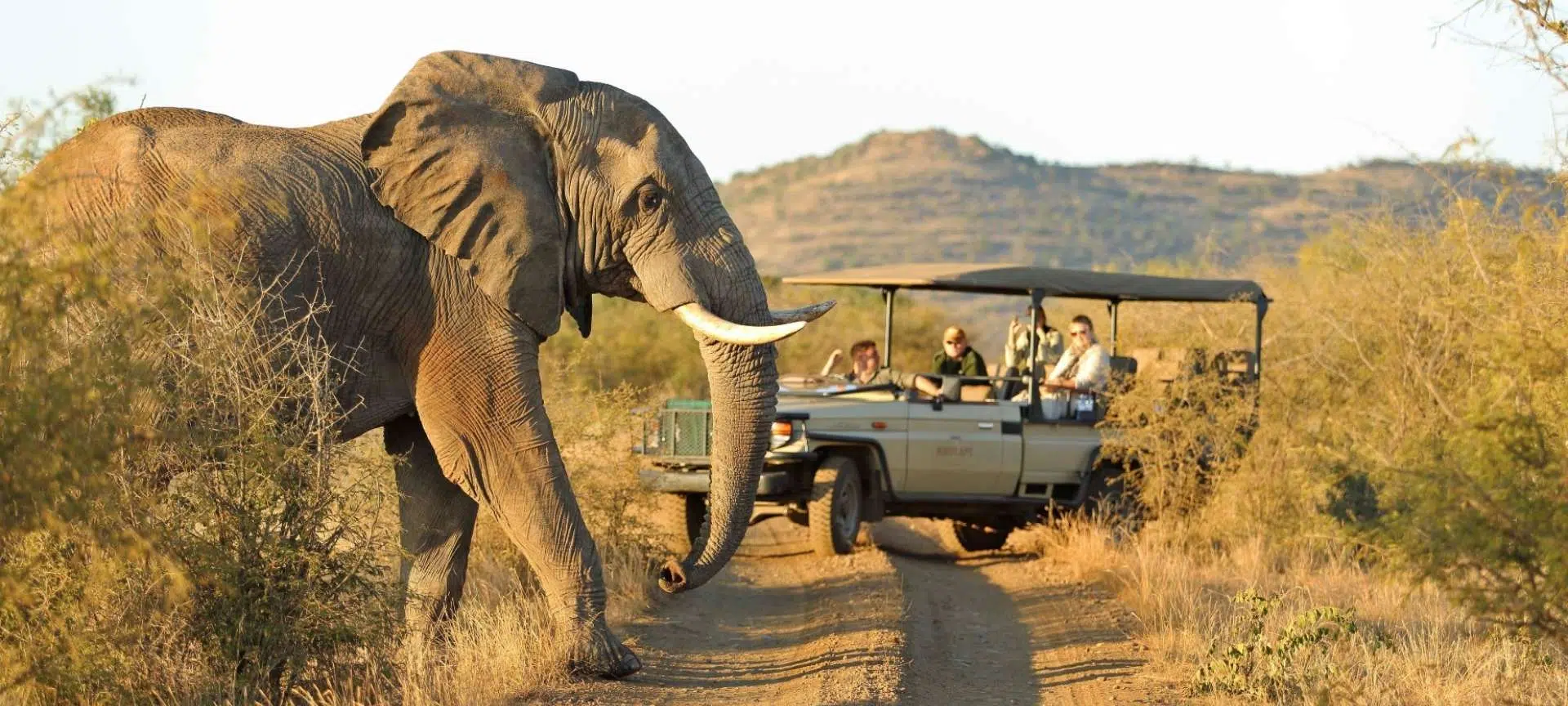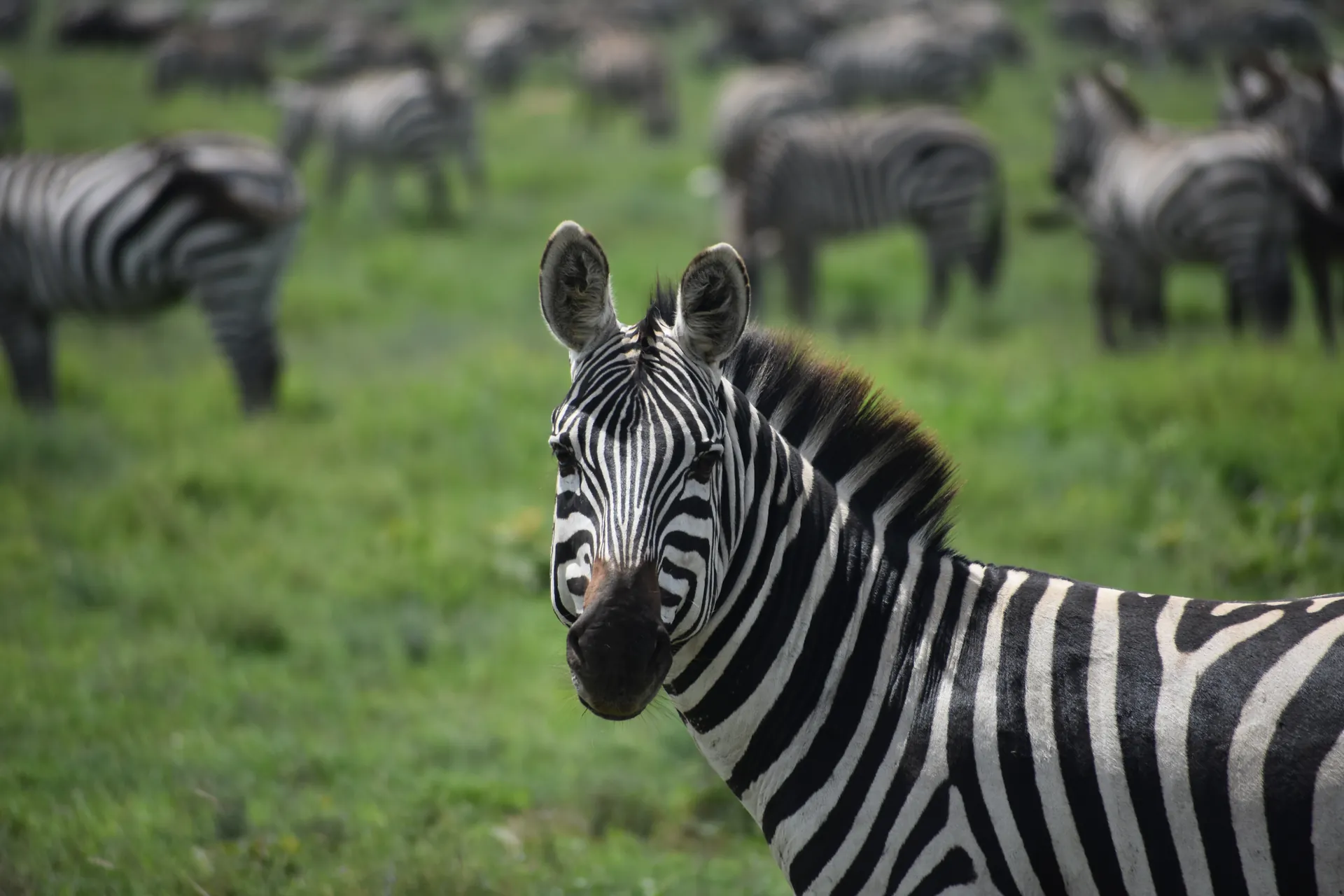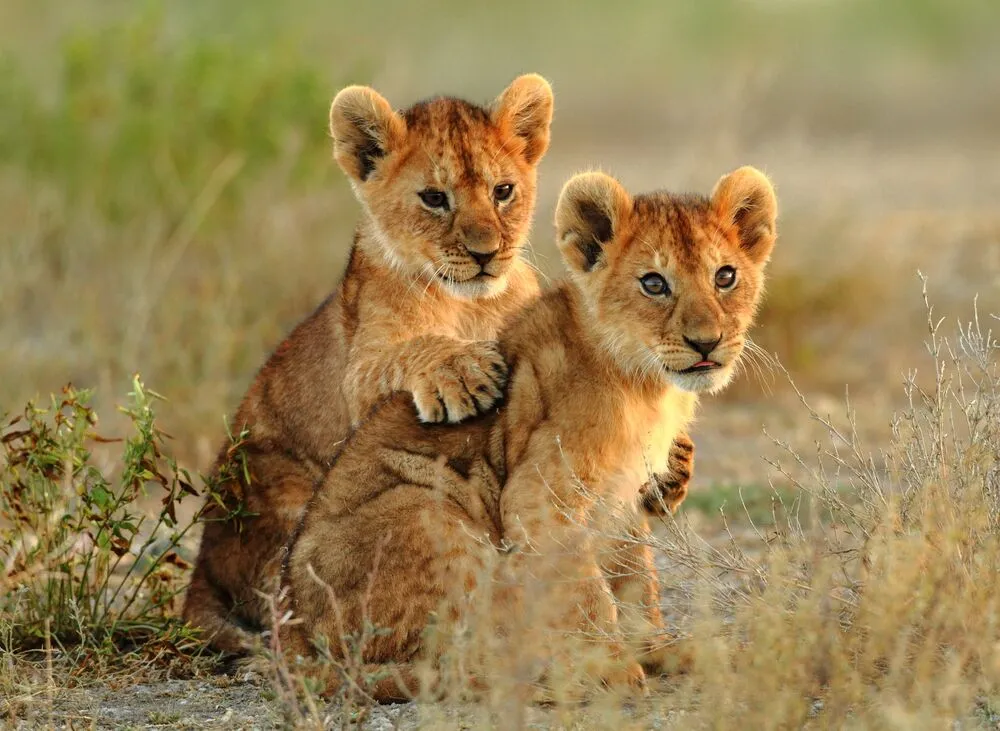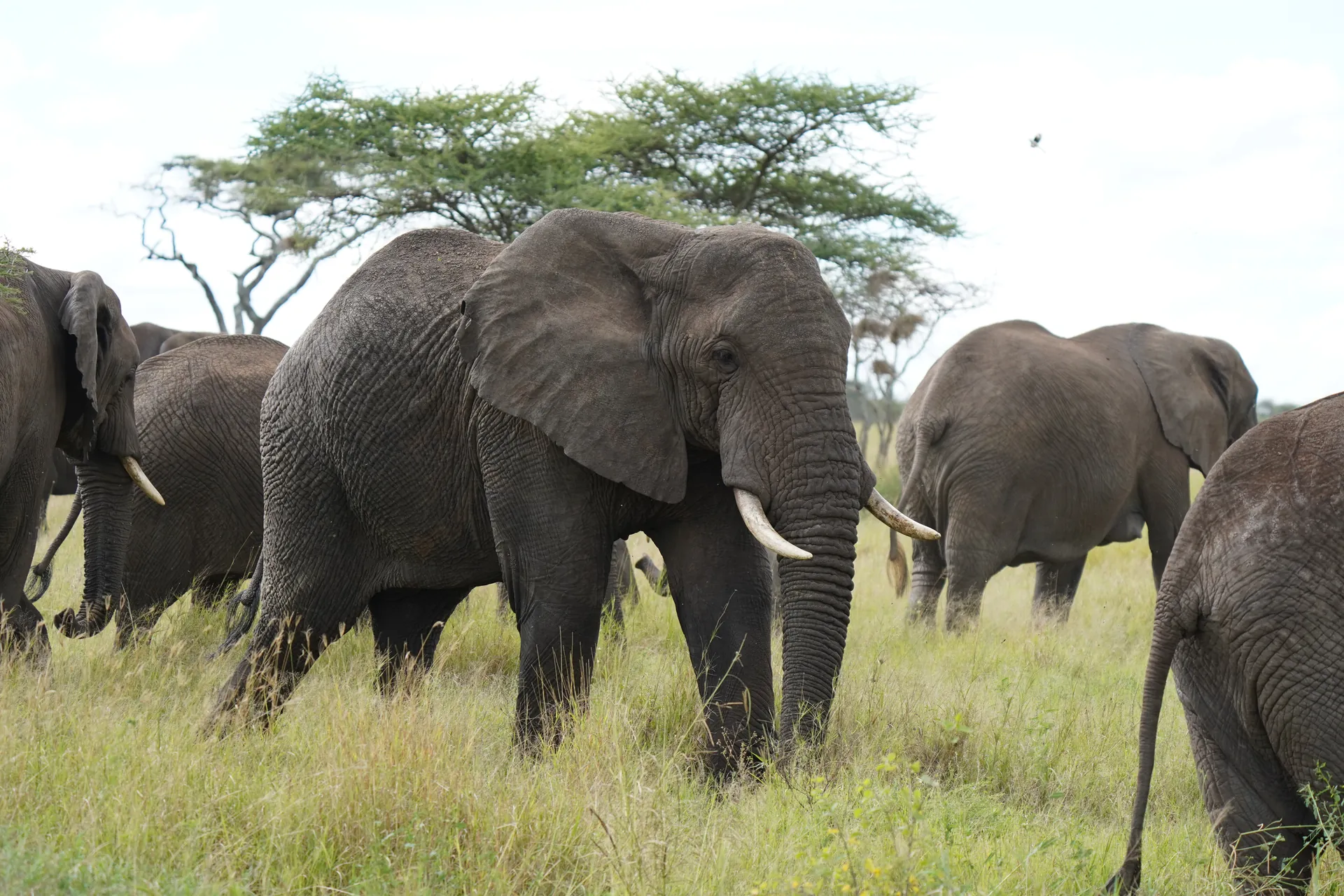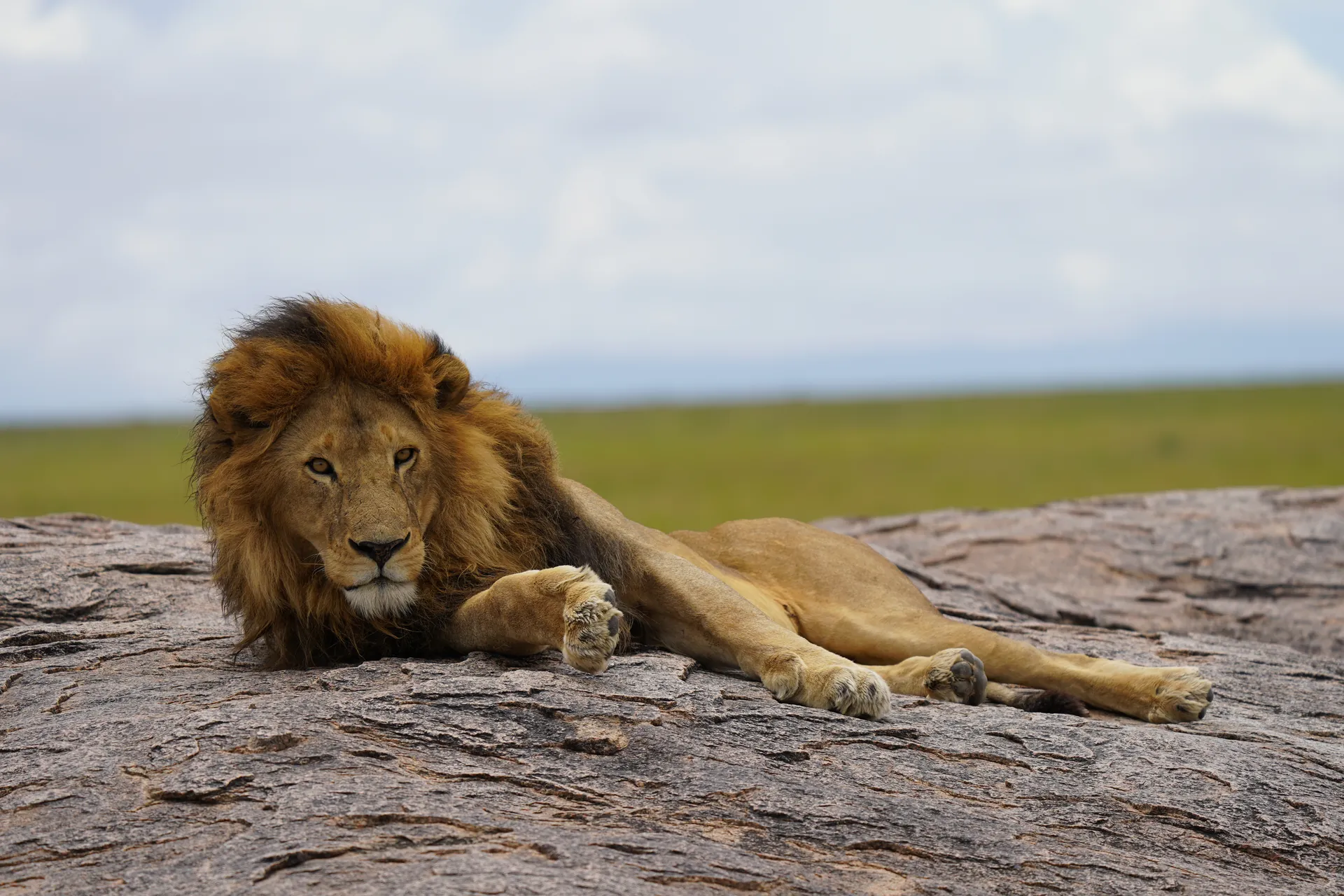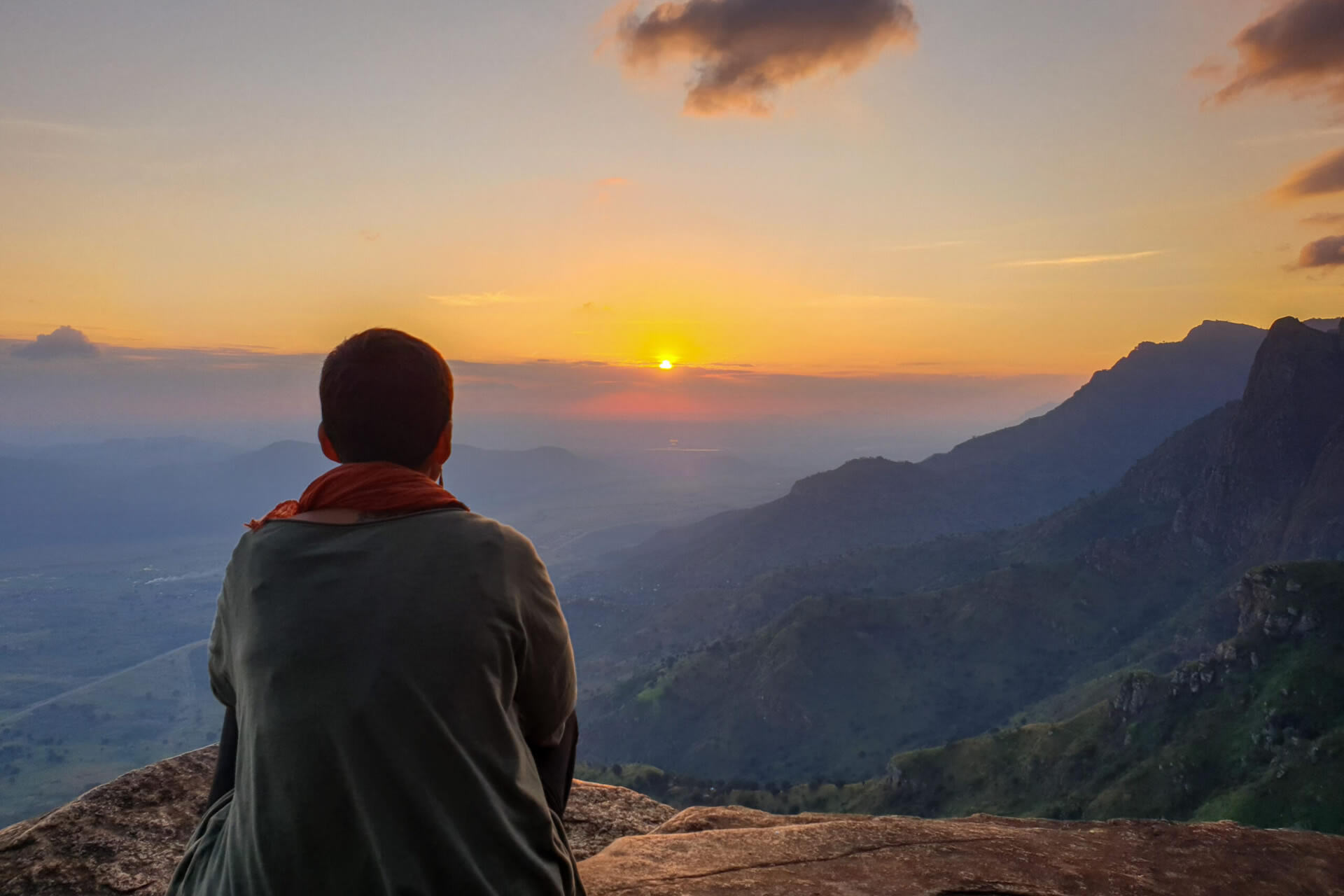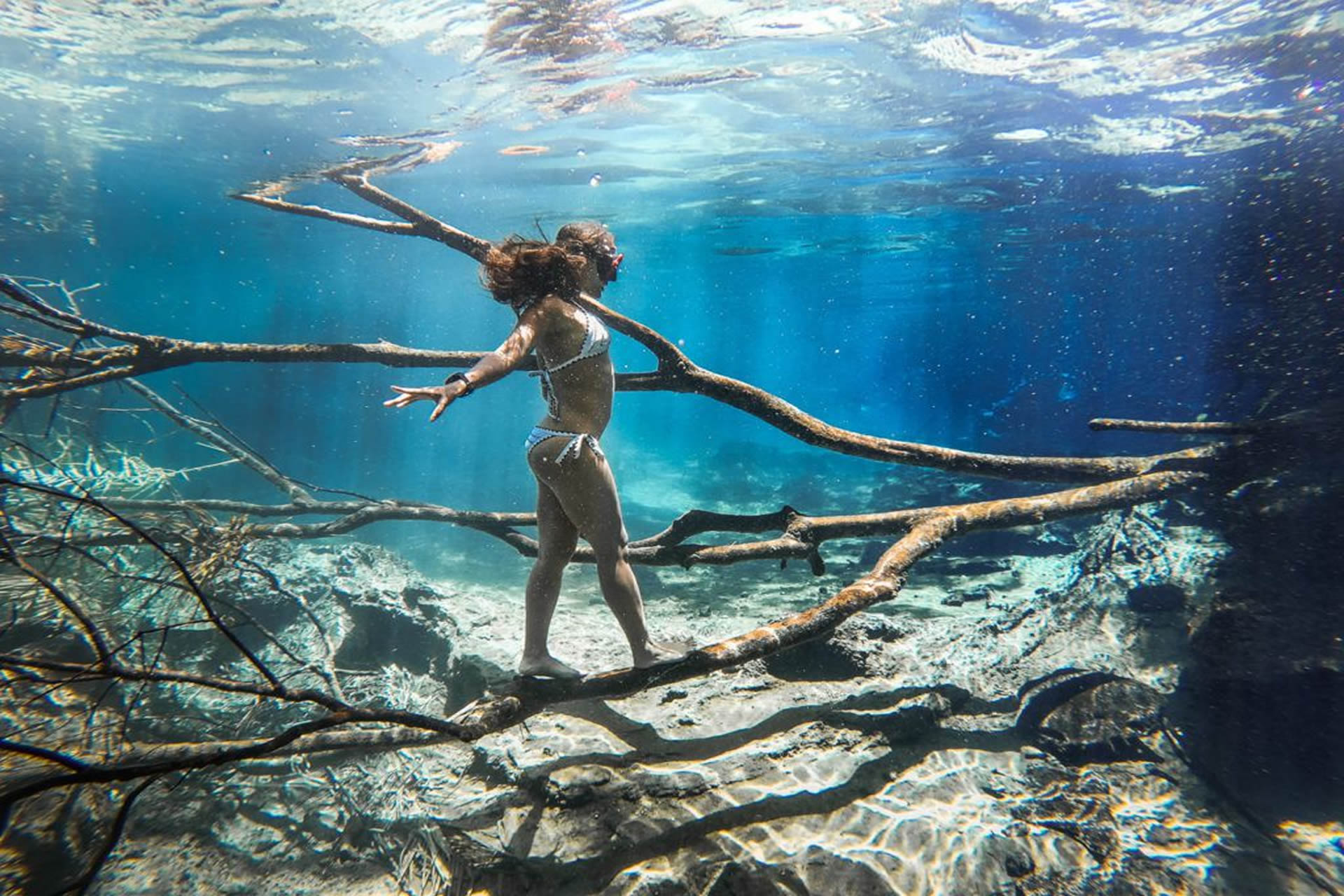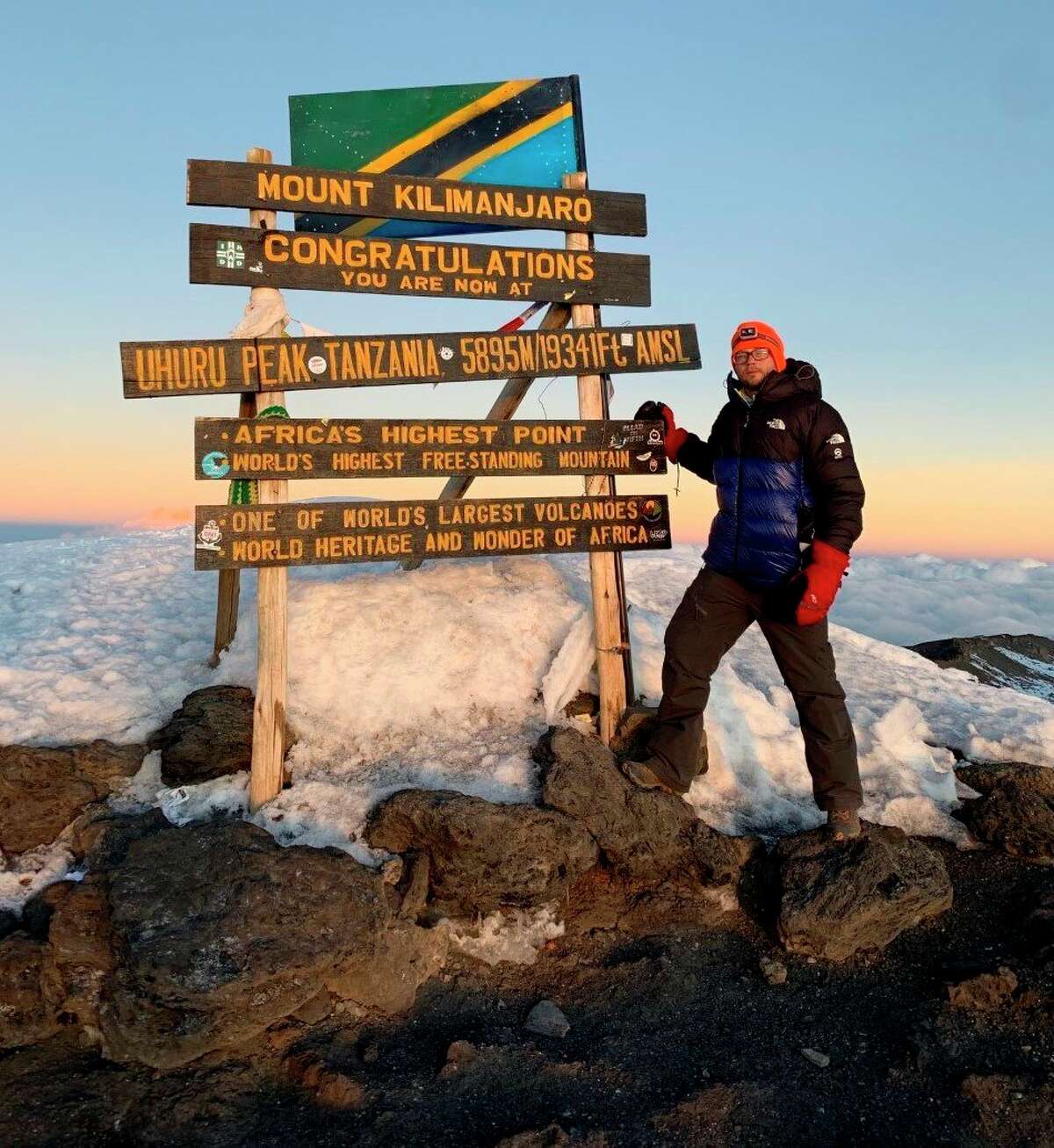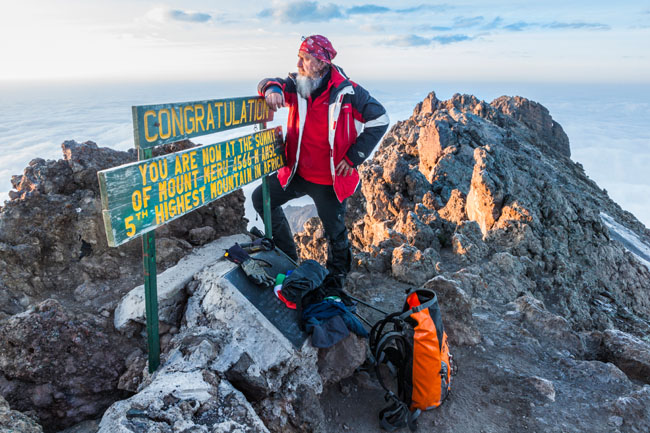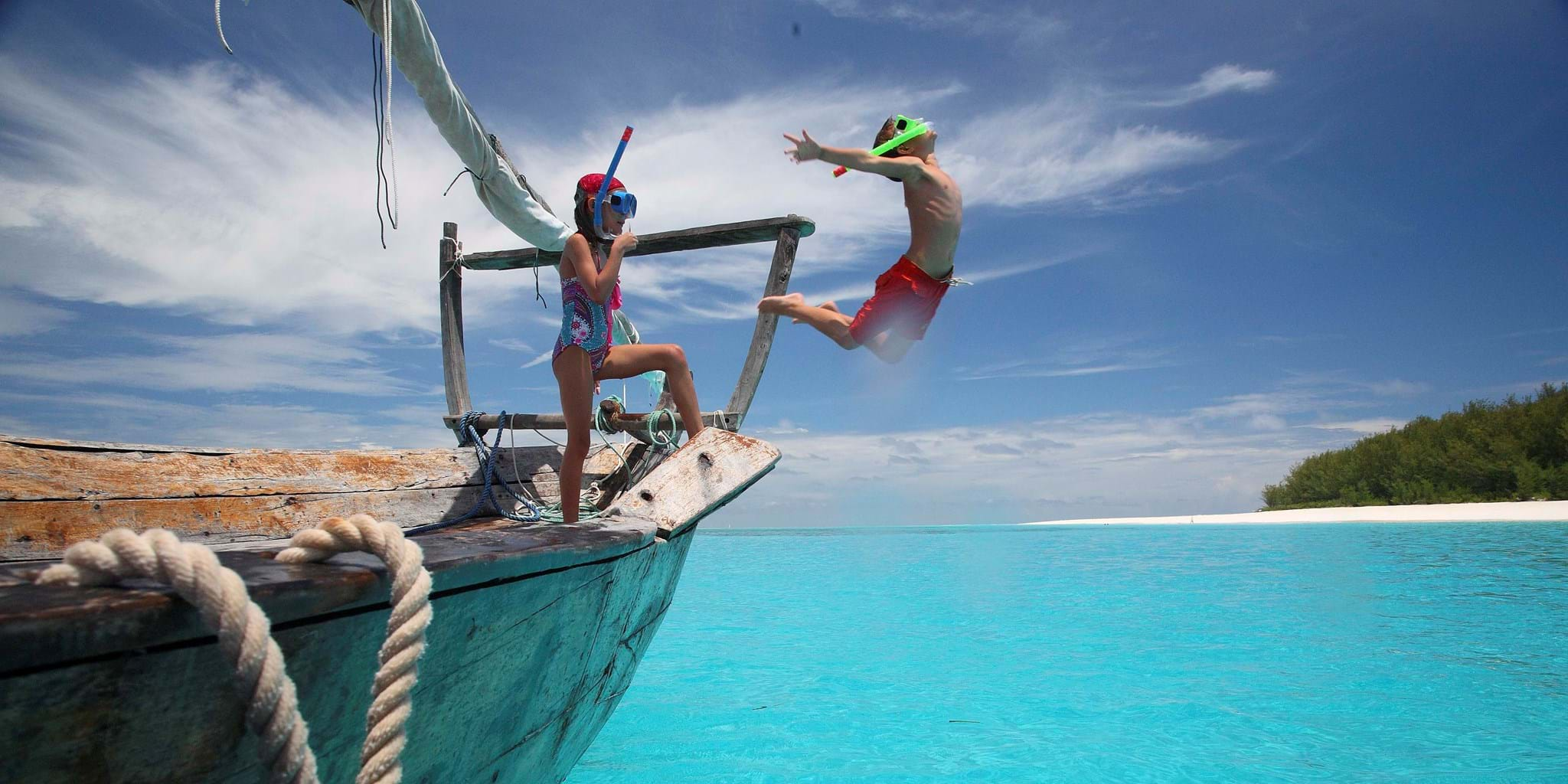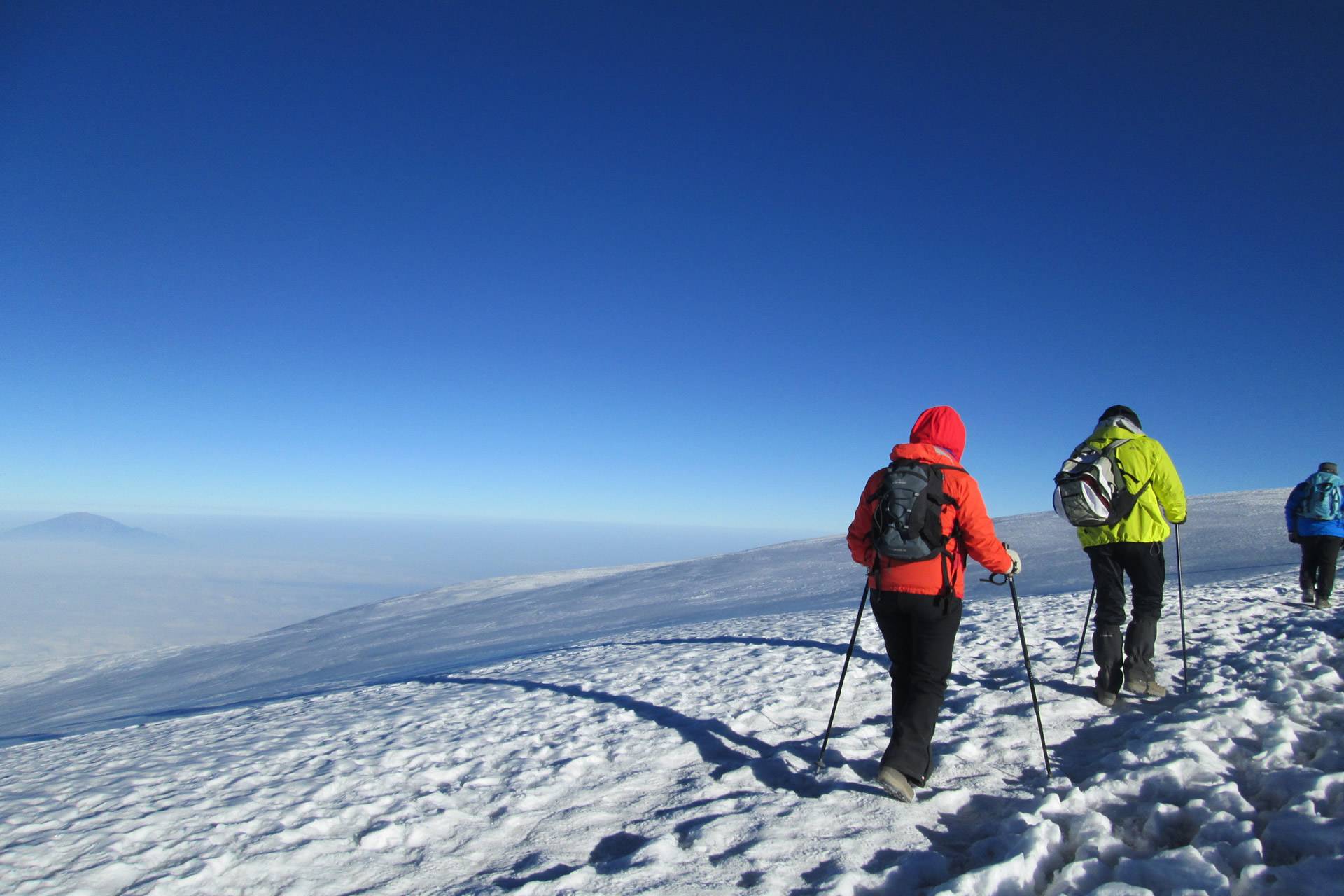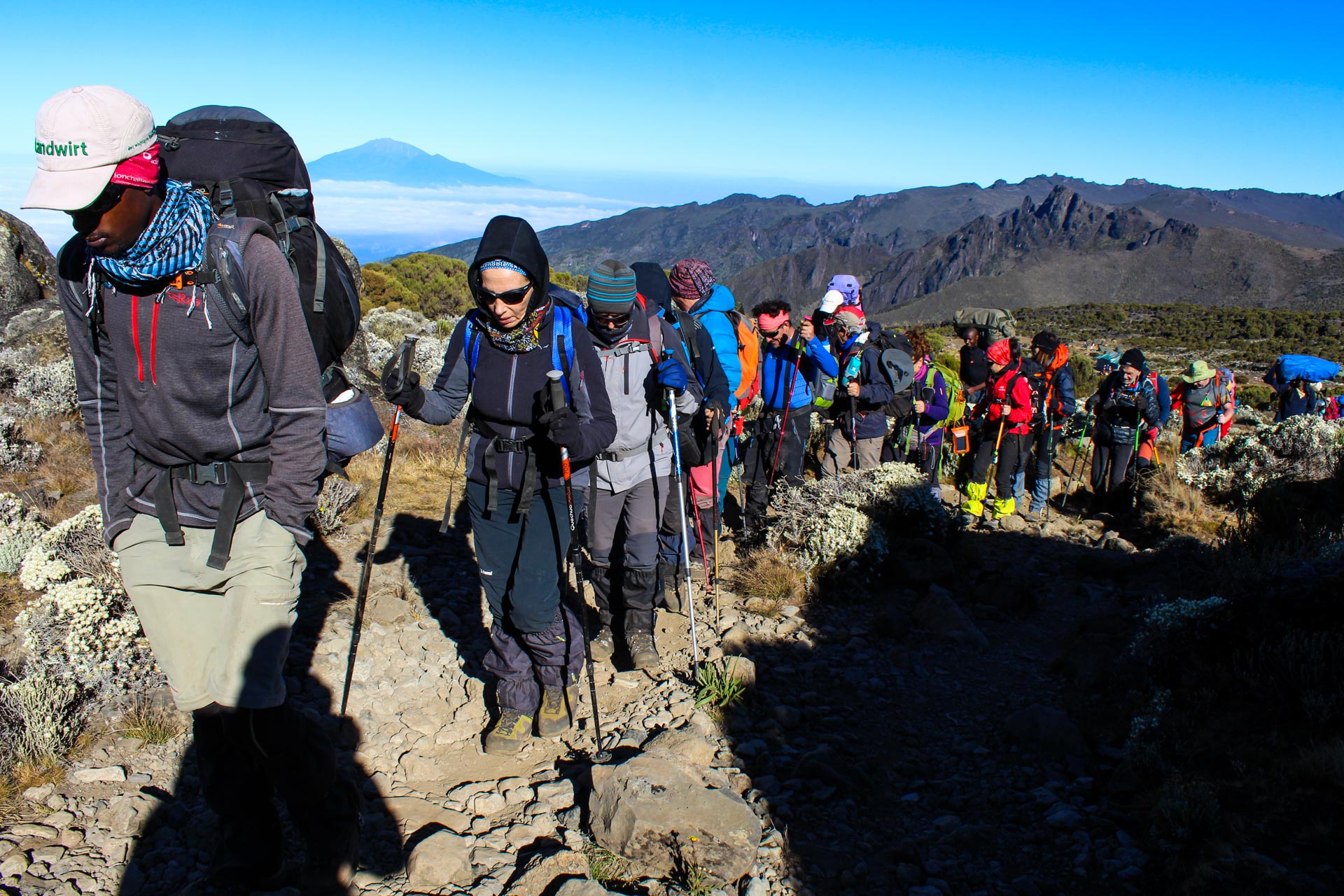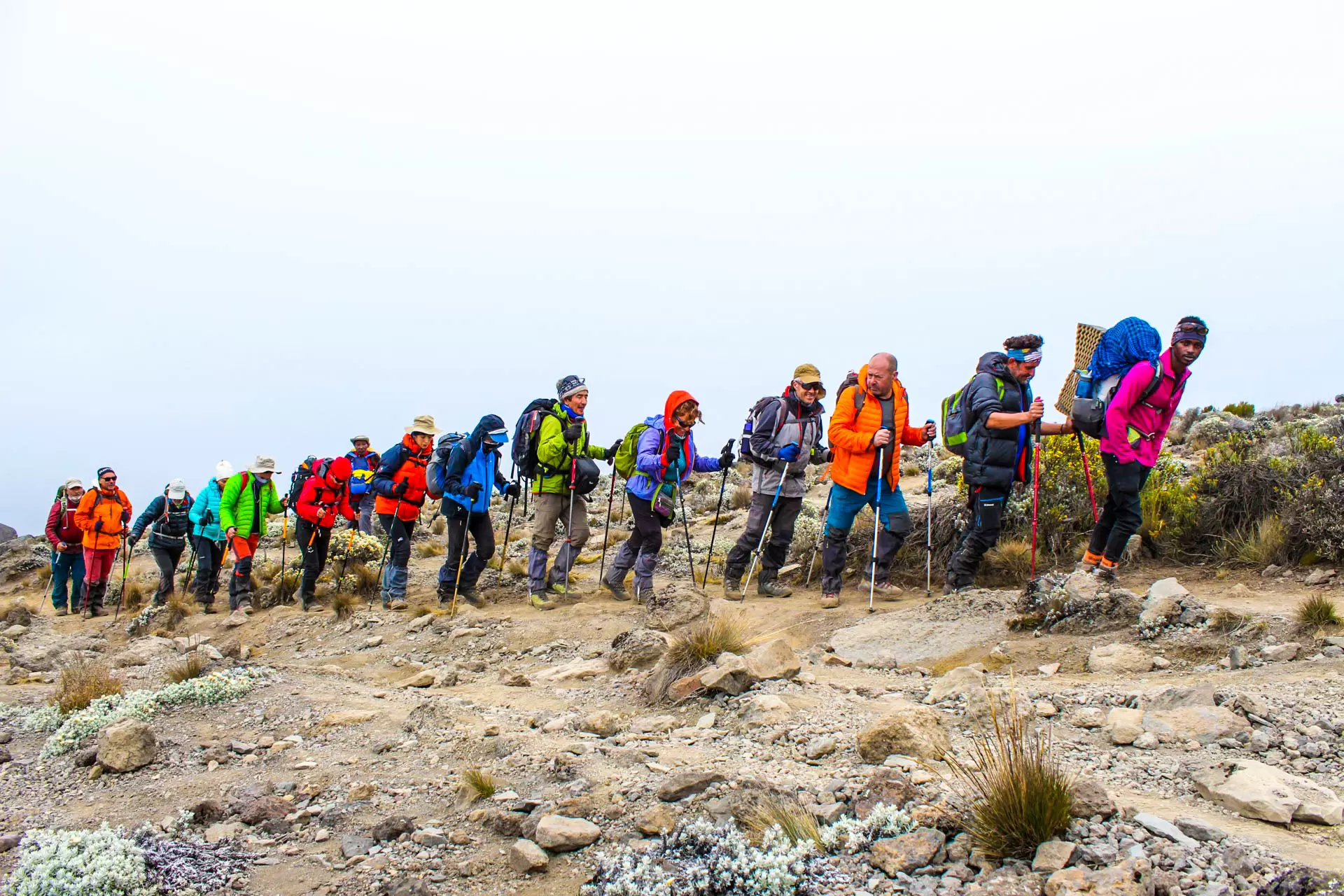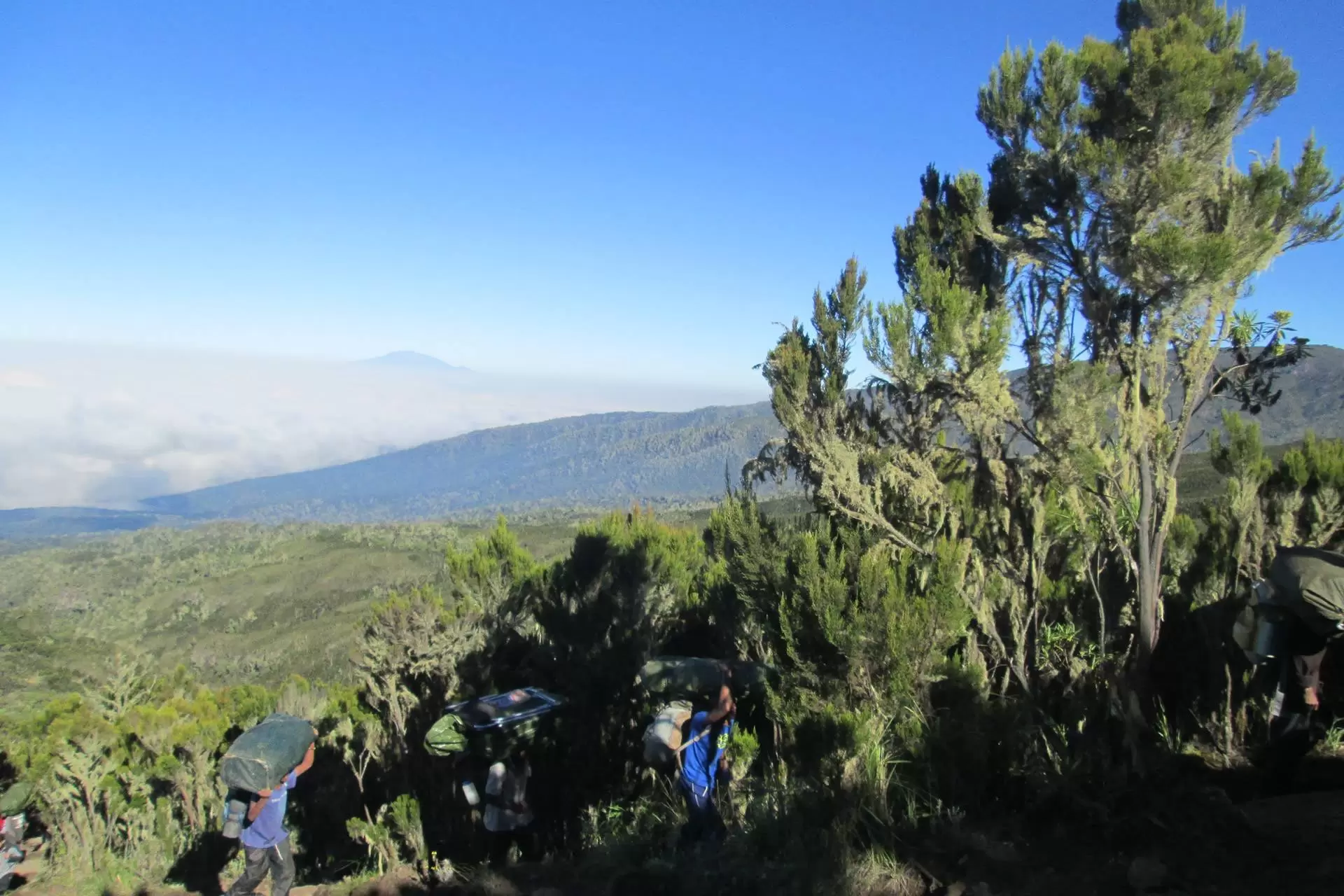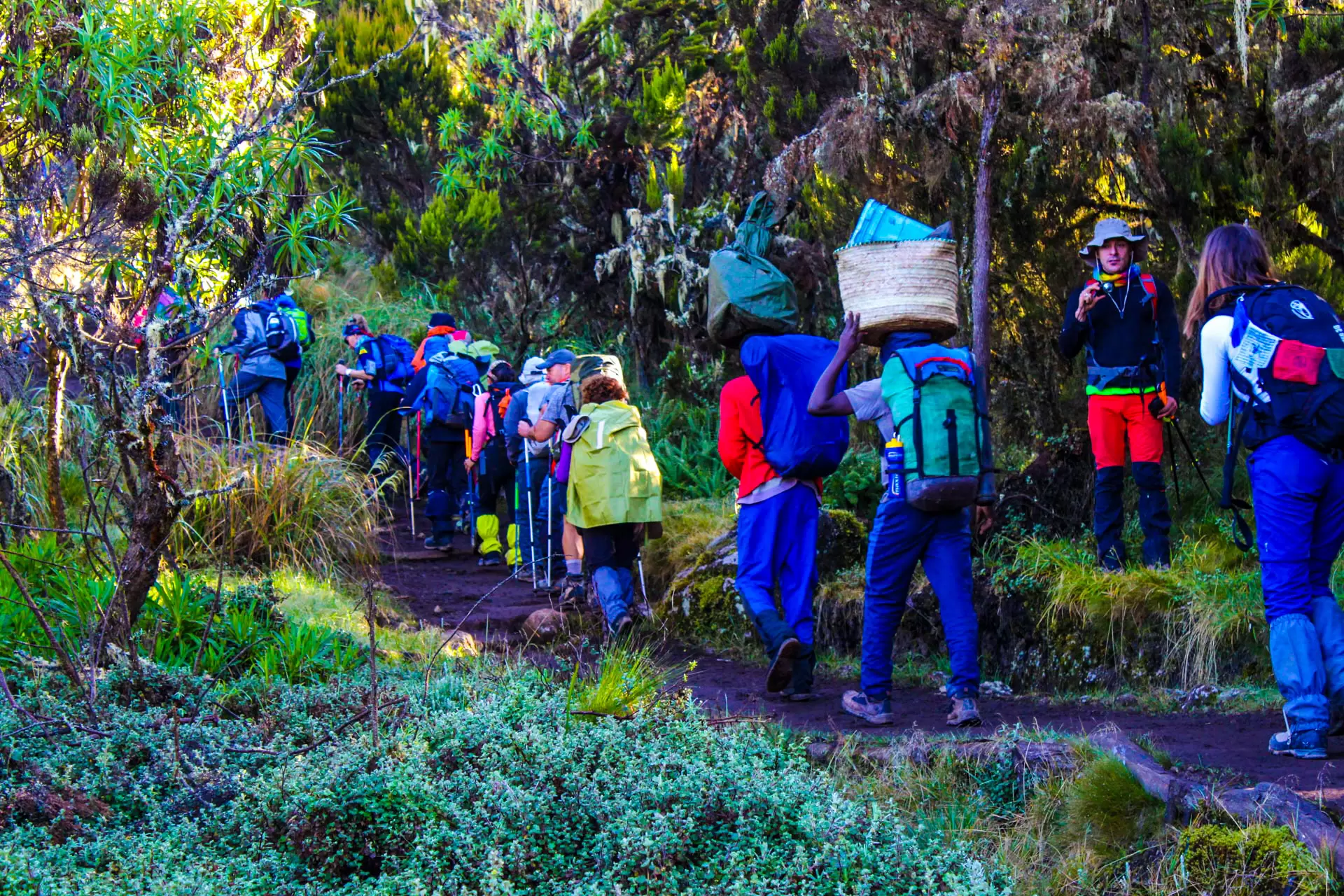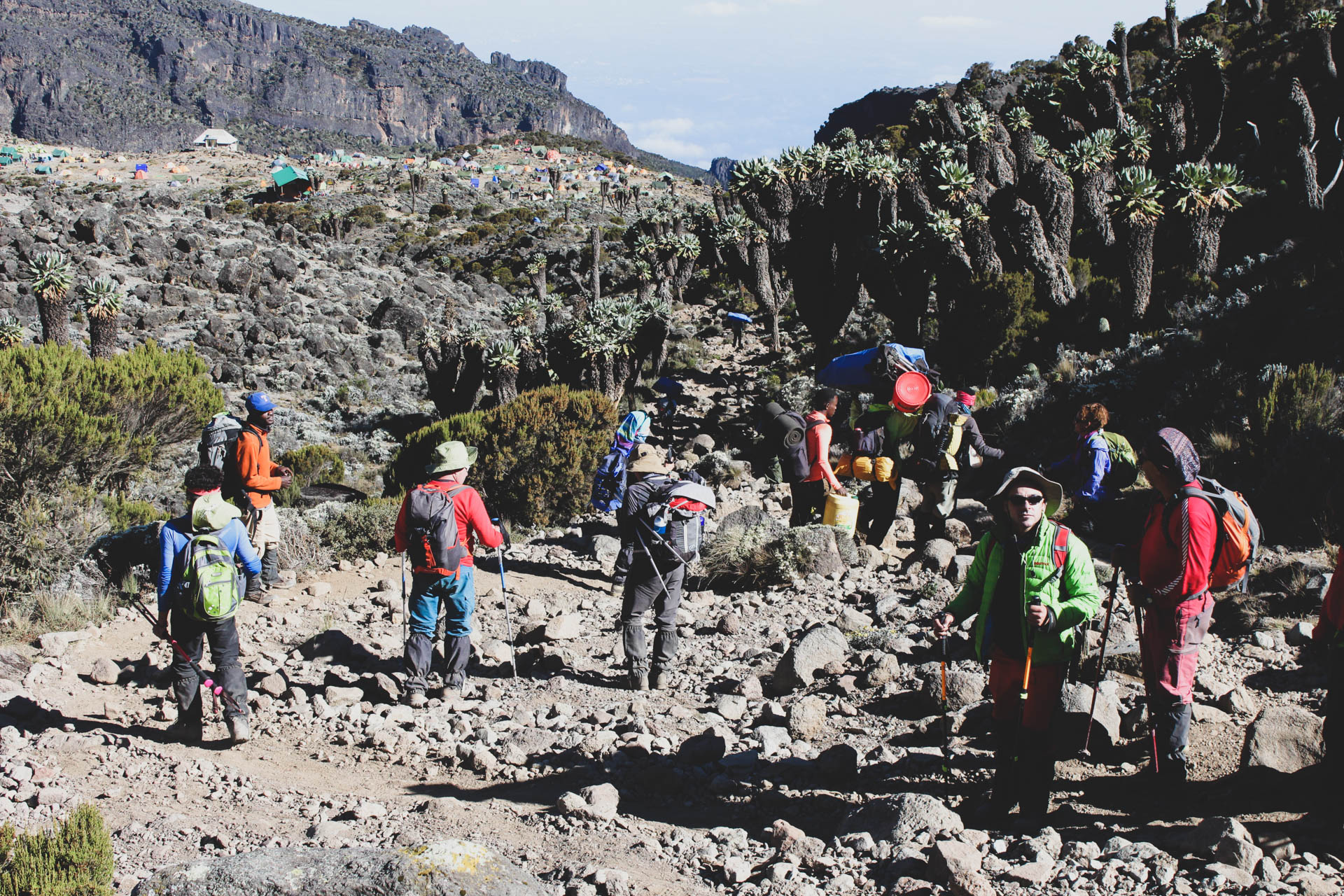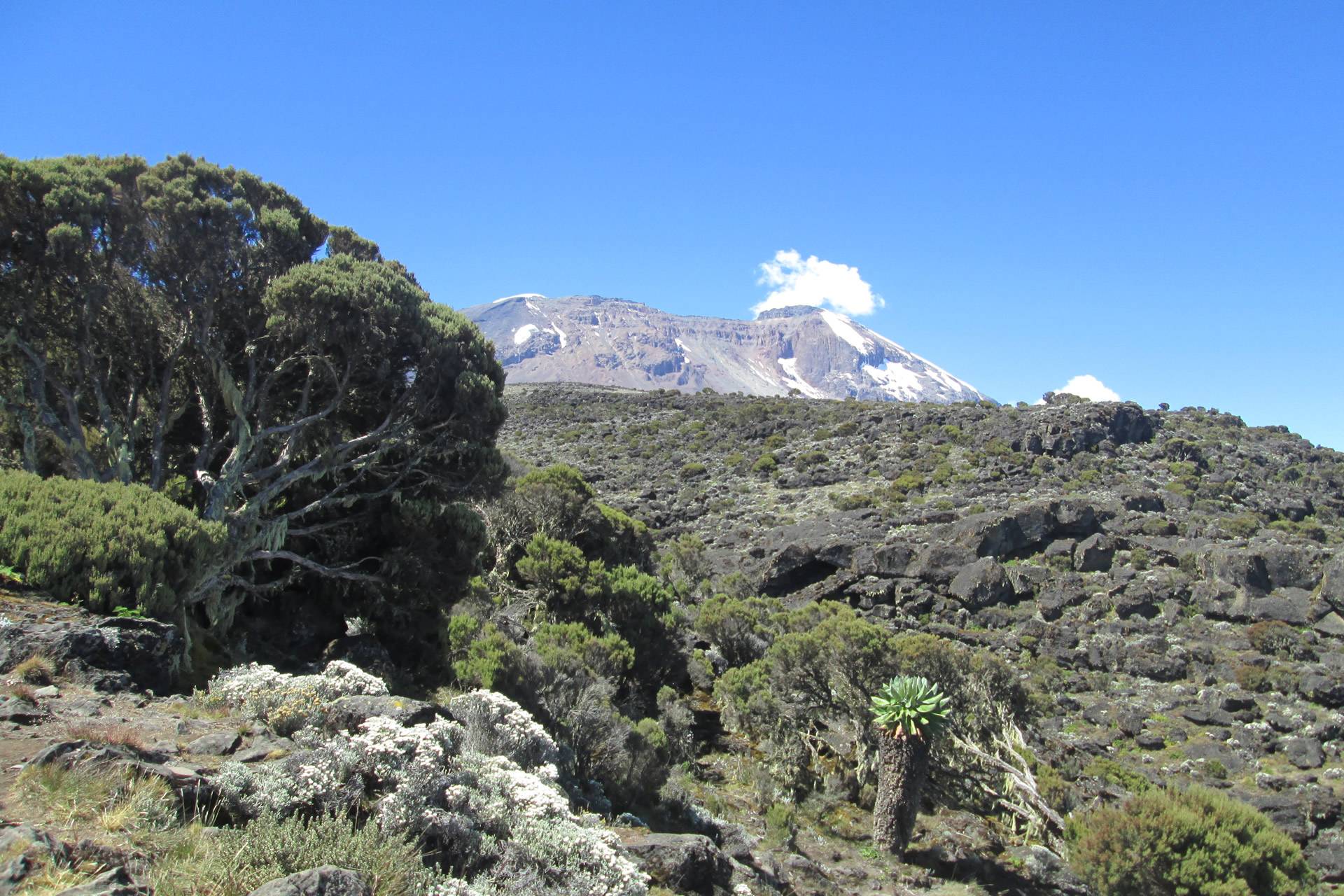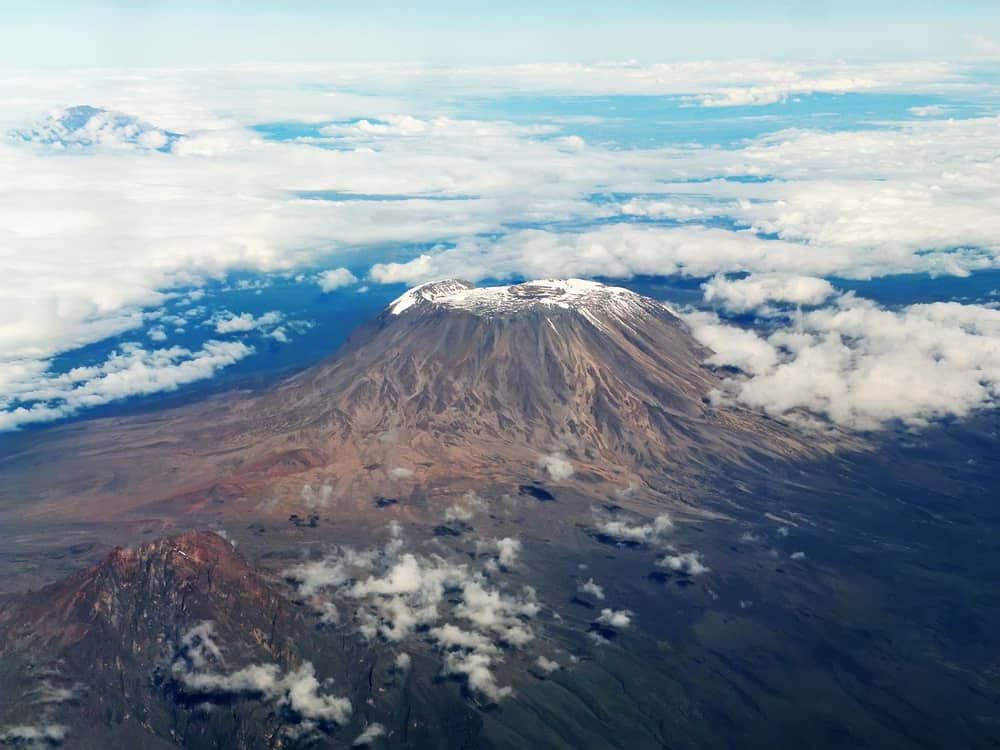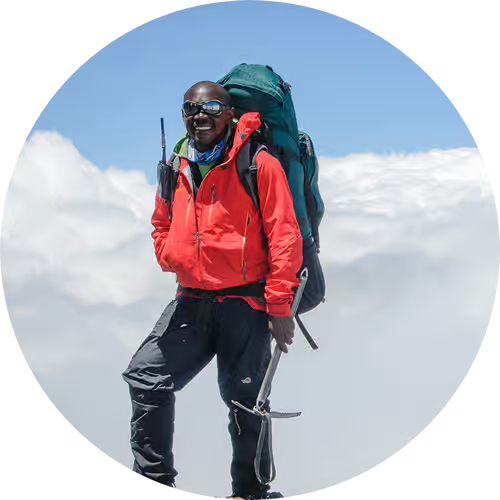CLIMATE ZONE #1
Cultivation Zone:
Altitude: 2,600 to 6,000 ft (800 to 1,800 m)
Precipitation: 20 to 70 in (500 to 1,800 mm)
Surrounding the base of Kilimanjaro is the cultivation zone. Comprising mostly farmland thanks to the fertile volcanic soil, this area gets plenty of annual rainfall. Mostly temperate conditions, you’ll mostly be passing through this region on your way to the trailhead.
CLIMATE ZONE #2
Forest Zone:
Altitude: 6,000 to 9,200 ft (1,800 to 2,800 m)
Precipitation: 79 to 40 in (2,000 to 1,000 mm)
We start our climb in the montane forest, a tropical rainforest that serves to absorb most of the moisture coming off the mountain, forming underground streams and springs. Conditions are usually warm and humid, with mists forming under the dense canopy. Thick cloud cover is not uncommon, and it can be muddy underfoot.
CLIMATE ZONE #3
Heath/Moorland Zone
Altitude: 9,200 to 13,200 ft (2,800 to 4,000 m)
Precipitation: 51 to 21 in (1,300 to 530 mm)
After hiking through the forest, you’ll emerge from the trees into the Heath and Moorland Zone. The dense tropical forest gives way to tall grasses and giant heathers, and you’ll be more exposed to the wind and rain.
Temperatures can remain warm throughout the day but drop significantly at night. The humidity lessens, the trails are dryer, and generally, it’s a more comfortable hiking experience. Rain tends to be minimal, although it can occur pretty much anywhere on the mountain.
The sun’s rays can be harsh, so you’ll need your sunscreen, and temperatures at night can be bitterly cold.
CLIMATE ZONE #4
Alpine/High Desert Zone:
Altitude: 13,200 to 16,500 ft (4,000 to 5,000 m)
Precipitation: 10 in (250 mm)
Climbing higher still, we’ll enter the High Desert Zone, arid, with only small, hardy plants surviving at an altitude where wind speeds continue to increase and there is little rainfall.
Day time temperatures can still be quite warm, but in the evening the mercury drops quickly, with conditions getting much colder. Here, it is not uncommon to be camped well above the clouds, which makes for an enchanting sight on a clear, starlit night.
The views are far-reaching and dramatic, the trails dustier, and the air much thinner.
CLIMATE ZONE #5
Arctic Zone:
Altitude: 16,500+ ft (5,000+ m)
Precipitation: 4 in (100 mm)
Above 16,000 ft is the Arctic or Summit Zone. With very little rainfall (most precipitation falls as snow) this barren desert is characterized by huge rocky outcrops, volcanic scree, and glaciers.
Known as “extreme altitude”, this region has approximately 49% of the oxygen at sea level. It’s a bleak, inhospitable place.
It’s very cold here, with blustery winds and nighttime temperatures well below freezing. As you set off for your summit attempt, there may be ice and snow underfoot, it’s bitterly cold, even at midday and the sun’s radiation is harsh.
Sunscreen is essential on any exposed parts of your body, the dry air will dehydrate you quickly, and you’ll need warm layers to keep your core temperature up.
